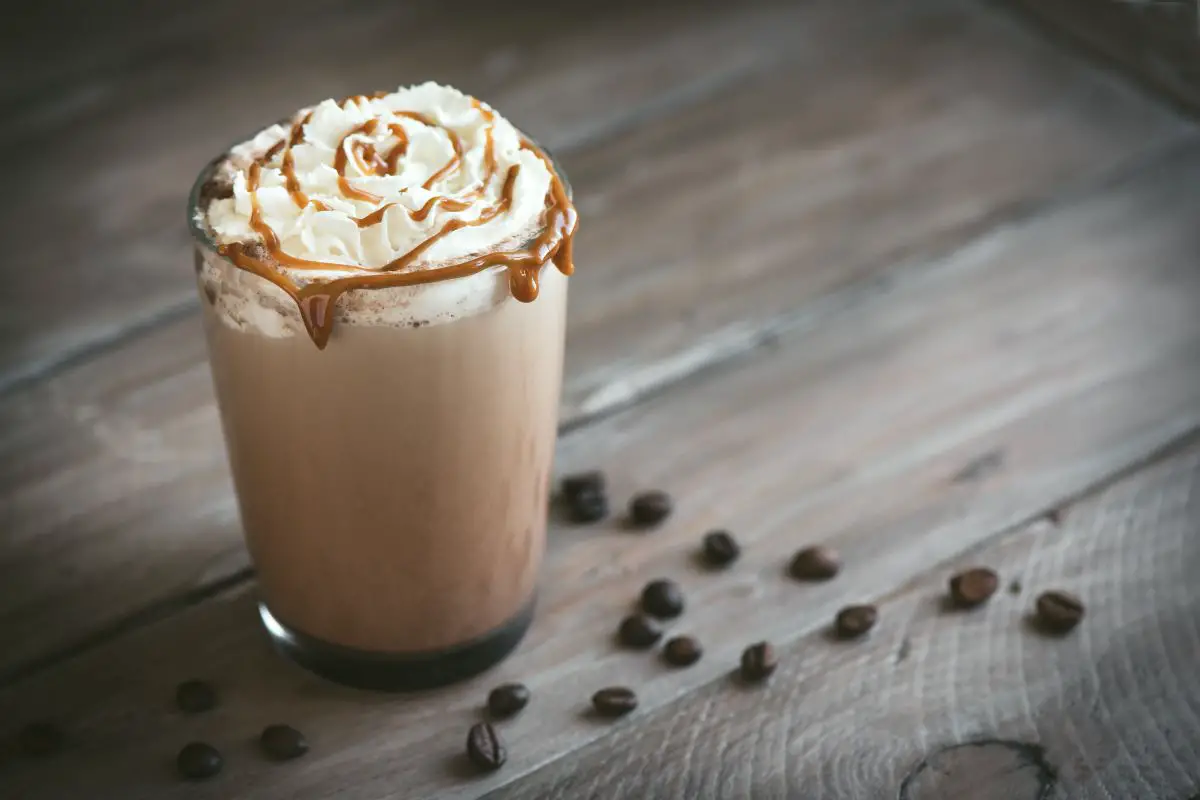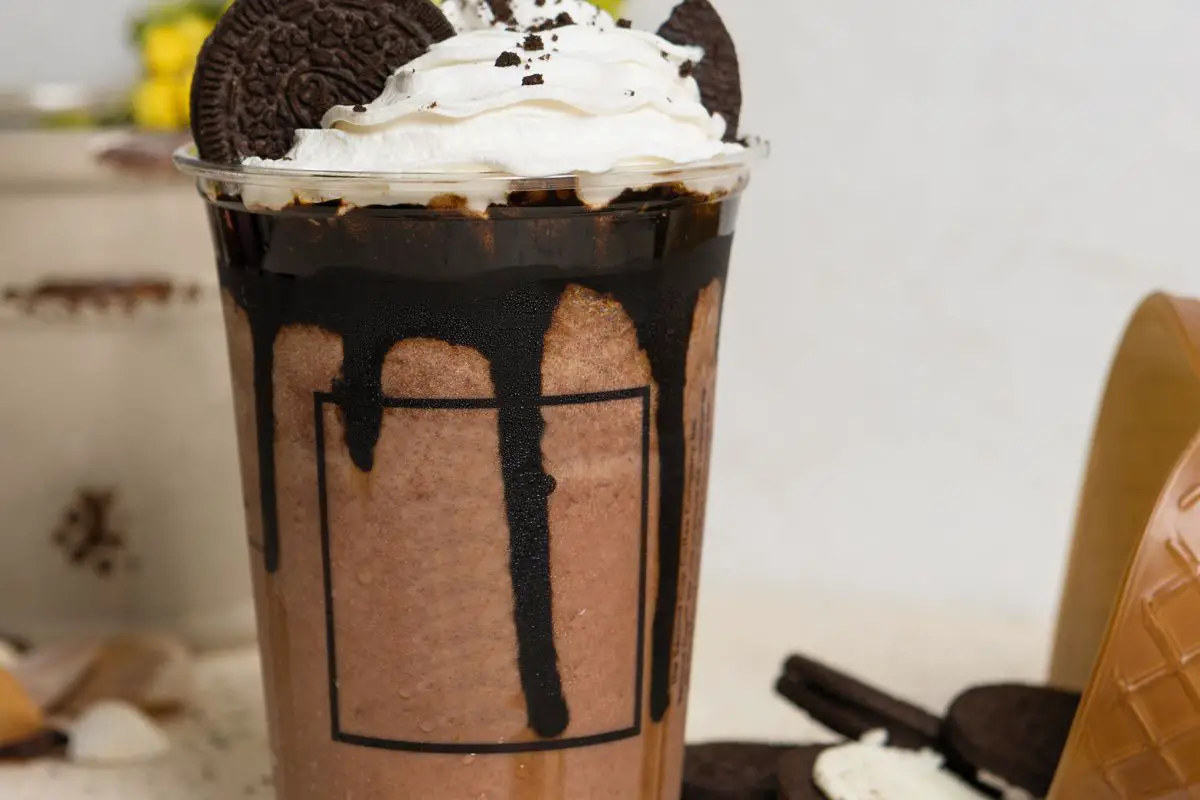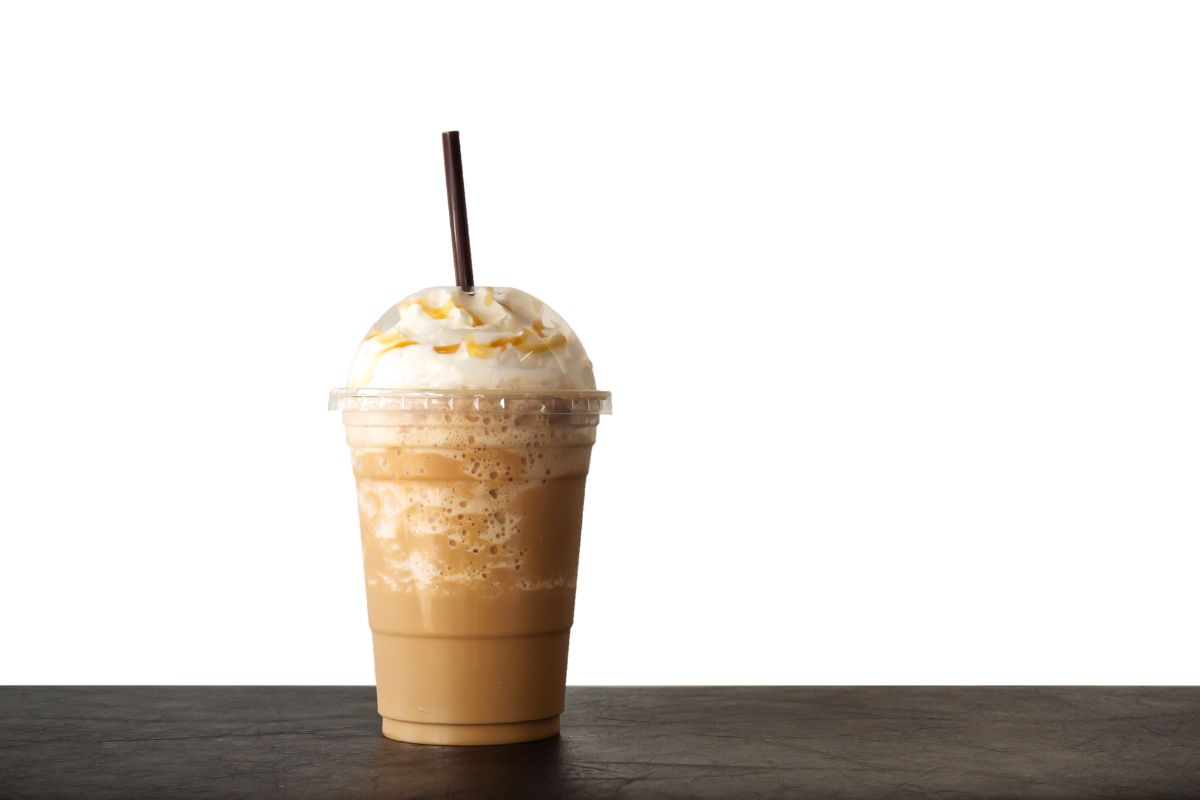In a world filled with caffeinated concoctions, two titans of the coffee realm stand before us: the cappuccino and the frappuccino. These beloved beverages have taken the global stage, captivating the taste buds of coffee enthusiasts far and wide. But what sets them apart? Prepare to embark on a journey of sensory exploration as we delve into the intricate details of these revered drinks.

First, let us dissect the cappuccino. With its origins rooted in Italian tradition, this classic brew combines equal parts espresso, steamed milk, and velvety foam. The result is a harmonious symphony of rich espresso notes, creamy textures, and a delicate touch of sweetness.
On the other hand, the frappuccino, a modern creation born from the marriage of coffee and frozen delight, sends icy chills down our spines. Blending coffee, milk, ice, and a myriad of decadent flavors, it offers a refreshingly cool and indulgent experience.
Join us as we delve into the distinct ingredients, preparation methods, and taste profiles of cappuccinos and frappuccinos. Discover the popular variations and customizations that allow these beverages to cater to diverse palates. In the pursuit of finding the perfect coffee companion, we will equip you with the knowledge needed to make an informed choice.
So, grab a seat, sip your preferred brew, and embark on this caffeine-fueled expedition.
Key Takeaways
- Cappuccino originated in Italy and consists of equal parts espresso, steamed milk, and foam, while Frappuccino is a modern creation made with coffee, milk, ice, and flavored syrups.
- Cappuccino has a bold espresso flavor with a slightly bitter taste, creamy sweetness from steamed milk, and a light and frothy texture from foam. Frappuccino, on the other hand, offers a refreshing and indulgent experience with a smooth and velvety texture, customizable sweetness level, and additional ingredients like whipped cream, caramel drizzle, or chocolate sauce.
- Cappuccino has a strong and intense coffee taste with a higher caffeine content, while Frappuccino is sweeter and lighter in taste, potentially containing less caffeine due to the dilution with milk and ice.
- When choosing between cappuccino and frappuccino, considerations such as personal preferences, desired caffeine levels, and dietary restrictions should be taken into account. Both beverages offer a wide range of flavors and customization options to cater to individual tastes and dietary preferences.
Ingredients and Preparation Methods of Cappuccino
The ingredients and preparation methods of cappuccino are distinct and emphasize the balance between espresso, steamed milk, and frothed milk. A traditional cappuccino consists of equal parts of these three components, resulting in a harmonious blend of flavors and textures.
The first step in making a cappuccino is to brew a shot of espresso, which is a concentrated form of coffee obtained by forcing hot water through finely ground coffee beans.
The next step involves steaming milk, which is done by heating it to a specific temperature in order to achieve a velvety texture. This steamed milk is then poured over the espresso in equal proportions.
To create the frothed milk, steam is introduced into the milk, creating tiny bubbles that give it a creamy and airy consistency. The frothed milk is then added to the cappuccino, forming a layer of foam on top.
This carefully crafted process ensures that each sip of cappuccino is a delightful experience, with the rich and bold flavor of espresso complemented by the smoothness of steamed and frothed milk.
Transitioning to the subsequent section about the ingredients and preparation methods of frappuccino, this popular beverage offers a contrasting experience to the cappuccino.
Ingredients and Preparation Methods of Frappuccino

Blended with a combination of ice, milk, flavored syrups, and coffee, frappuccinos are prepared by vigorously blending the ingredients together to create a refreshing and indulgent beverage.
The process begins with the addition of ice, which provides a chilled base for the drink. Then, milk is poured into the blender, ensuring a creamy and smooth texture. To enhance the flavor, various flavored syrups such as caramel, vanilla, or chocolate are added. These syrups not only add sweetness but also contribute to the overall taste profile. Finally, a shot of coffee is included to provide the signature coffee flavor that frappuccinos are known for.
- The first sub-list of emotional response:
- Savor the icy-cold, creamy goodness that tantalizes your taste buds.
- Feel the indulgence as the flavors meld together in perfect harmony.
- Experience the refreshing sensation that cools you down on a hot day.
- The second sub-list of emotional response:
- Delight in the sweet and rich flavors that satisfy your cravings.
- Indulge in a luxurious treat that offers a momentary escape from the daily routine.
- Enjoy the sense of comfort and relaxation that comes with each sip.
- The third sub-list of emotional response:
- Embrace the feeling of being transported to a cozy café with every sip.
- Cherish the moments of pure bliss as you savor the exquisite combination of flavors.
- Revel in the pleasure of drinking a beverage that brings joy to your day.
Transitioning into the subsequent section about the taste profile of cappuccino, the ingredients and preparation methods of frappuccino create a unique sensory experience that is different from the traditional cappuccino.
Taste Profile of Cappuccino

With its harmonious balance of bold espresso, velvety milk, and airy foam, the taste profile of a classic cappuccino offers a sensory experience that awakens the senses and leaves a lingering satisfaction.
The first sip reveals a rich and robust flavor from the espresso, which is the foundation of the cappuccino. The espresso is carefully extracted, providing a strong and distinctive taste that is both smooth and slightly bitter.
As the milk is steamed to the perfect temperature, it becomes velvety and adds a creamy sweetness to the drink. The milk’s natural sugars are enhanced during the steaming process, creating a pleasant and delicate flavor that complements the espresso.
Lastly, the airy foam on top adds a light and frothy texture to the cappuccino, enhancing the overall drinking experience. The foam acts as a barrier, preserving the warmth of the drink while providing a soft and velvety mouthfeel.
As the flavors of the espresso, milk, and foam meld together, they create a well-balanced and satisfying cup of cappuccino.
Transitioning to the taste profile of the frappuccino, it offers a completely different experience with its blend of icy and creamy elements.
Taste Profile of Frappuccino
Featuring a refreshing fusion of chilled and creamy components, the frappuccino unveils a unique taste profile that captivates the palate and offers a delightful contrast to its espresso-based counterpart.
The frappuccino is known for its smooth and velvety texture, achieved through the blending of ice, milk, and a variety of flavorful ingredients. This icy beverage typically boasts a sweet and indulgent taste, often accompanied by hints of coffee, chocolate, or fruit flavors. The level of sweetness can be customized to suit individual preferences, making it a versatile option for those seeking a personalized beverage experience.
In addition to its creamy base, the frappuccino often incorporates additional ingredients such as whipped cream, caramel drizzle, or chocolate sauce, which further enhance its taste and visual appeal. These additions contribute to the overall richness and decadence of the frappuccino, creating a truly indulgent treat.
Transitioning into the subsequent section about popular variations and customizations, the frappuccino offers a wide range of options for customization according to taste and preference. From adding extra shots of espresso to incorporating different syrups or toppings, customers can tailor their frappuccino to suit their unique cravings.
Popular Variations and Customizations
Renowned for its adaptability, the frappuccino offers a myriad of possibilities for customization, allowing patrons to tailor their beverage according to their unique desires, thus enticing them to explore the vast array of popular variations available. From adding extra shots of espresso to opting for alternative milk options, the frappuccino can be modified to suit various tastes and dietary preferences.
To illustrate the extent of customization options, the following table presents four popular variations of frappuccino, along with their corresponding ingredients and flavor profiles:
| Variation | Ingredients | Flavor Profile |
|---|---|---|
| Caramel | Coffee, milk, caramel syrup | Sweet, creamy, with a hint of caramel |
| Mocha | Coffee, milk, mocha sauce | Rich, chocolatey, with a touch of coffee |
| Vanilla Bean | Coffee, milk, vanilla syrup | Smooth, sweet, with a subtle vanilla undertone |
| Green Tea | Matcha powder, milk, syrup | Earthy, slightly sweet, with a hint of green tea |
By providing a diverse selection of flavors, the frappuccino caters to a wide range of preferences, ensuring that each customer can find their perfect blend. With its customizable nature, the frappuccino encourages exploration and allows individuals to create a beverage that aligns with their specific tastes and needs.
Transitioning into the subsequent section about choosing the right coffee beverage for you, it is important to consider various factors such as personal preferences, desired caffeine levels, and dietary restrictions.
Choosing the Right Coffee Beverage for You
When selecting the perfect coffee beverage for oneself, it is crucial to consider individual preferences, desired caffeine levels, and any dietary restrictions that may be present.
There are various factors to consider when choosing between a cappuccino and a frappuccino.
A cappuccino is a traditional Italian espresso-based drink that consists of equal parts espresso, steamed milk, and milk foam. It is known for its strong and bold flavor.
On the other hand, a frappuccino is a blended coffee drink that combines coffee, milk, ice, and various flavors such as chocolate or caramel. It is typically sweeter and lighter in taste compared to a cappuccino.
For individuals who prefer a stronger and more intense coffee taste, a cappuccino would be the ideal choice. Its balanced combination of espresso, steamed milk, and foam creates a rich and robust flavor profile.
However, those who enjoy a sweeter and more refreshing coffee beverage may opt for a frappuccino. Its blended and chilled nature, along with the addition of flavors, provides a smooth and indulgent experience.
When it comes to caffeine levels, cappuccinos generally contain more caffeine due to the higher concentration of espresso. Frappuccinos, on the other hand, may have less caffeine as they are often diluted with milk and ice. This is an important consideration for individuals who desire a specific level of caffeine intake.
Furthermore, individuals with dietary restrictions should carefully consider the ingredients used in both cappuccinos and frappuccinos. Cappuccinos can be customized to accommodate dietary preferences, such as using alternative milk options or sugar substitutes. Frappuccinos also offer customization options, allowing individuals to choose from a range of milk alternatives and adjust the sweetness level.
Choosing the right coffee beverage involves considering individual preferences, desired caffeine levels, and dietary restrictions. By carefully evaluating these factors, individuals can make an informed decision between a cappuccino and a frappuccino that best suits their needs and ensures a satisfying coffee experience.
Frequently Asked Questions
Can I make a cappuccino without using an espresso machine?
Making a cappuccino without an espresso machine is possible by using alternative methods such as a French press or stovetop moka pot. However, these methods may not achieve the same level of quality and consistency as an espresso machine.
What is the difference between a cappuccino and a latte?
A cappuccino and a latte are both espresso-based drinks, but they differ in their proportion of espresso, milk, and foam. A cappuccino has equal parts of espresso, steamed milk, and foam, while a latte has more steamed milk and less foam.
Are cappuccinos and frappuccinos suitable for people with lactose intolerance?
Cappuccinos and frappuccinos can be suitable for people with lactose intolerance if made with lactose-free milk or milk alternatives. Lactose-free cappuccinos and frappuccinos are available at many coffee shops, providing safe options for those with lactose intolerance.
Can I customize the sweetness of a frappuccino?
Frappuccinos can be customized for sweetness by adjusting the amount of syrup or adding additional sweeteners like caramel or vanilla. This allows individuals to tailor the drink to their desired level of sweetness.
How long does it take to prepare a cappuccino or a frappuccino at home?
The preparation time for a cappuccino or a frappuccino at home varies depending on the specific recipe and equipment used. However, on average, it can take around 5-10 minutes to make a cappuccino and 10-15 minutes to prepare a frappuccino.
Conclusion
In conclusion, the battle between cappuccino and frappuccino is not just a mere clash of flavors, but a reflection of our society’s complex and ever-changing taste preferences.
Through a detailed analysis of their ingredients, preparation methods, and taste profiles, we have unraveled the intricate web of flavors that these coffee beverages offer.
While cappuccino boasts a harmonious blend of espresso, steamed milk, and frothy foam, frappuccino entices with its icy allure and sweet concoctions.
Whether you lean towards the traditional elegance of cappuccino or the refreshing indulgence of frappuccino, the choice ultimately lies in your discerning palate. Choose wisely, for your coffee beverage is a reflection of who you truly are.
Related articles: